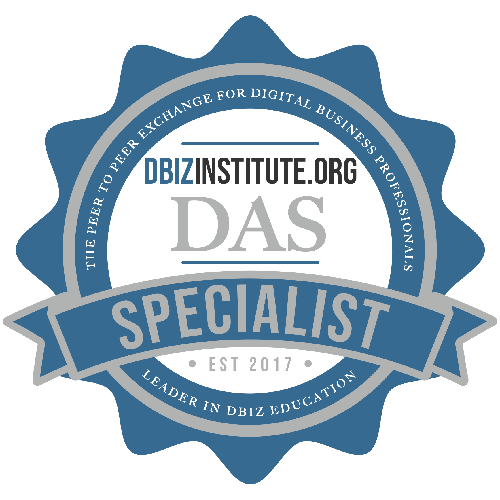Bridging the Gap Between Data and Processes with Shared Data Model Notation (SDMN)
In today’s digital transformation landscape, organizations face a persistent challenge: bridging the gap between process modeling and data architecture. Whether it’s synchronizing customer records across departments or ensuring compliance data is shared accurately across business units, companies often struggle to keep their data architecture up to date and synchronized with their processes.
Enter Shared Data Model Notation (SDMN), an emerging standard that promises to revolutionize how businesses align their data and process frameworks. SDMN, in the context of BPM+, ensures that the data structures across BPMN, DMN, and CMMN models remains consistent, up-to-date, and actionable.
In this article, we’ll explore what SDMN is, why it’s an essential component of the BPM+ ecosystem, and how it enhances both data integrity and process automation.
The Problem: Data Disparities Across Systems
For years, business analysts have relied on Business Process Model and Notation (BPMN) to map out workflows and procedures. While BPMN excels at visualizing process flows, it often falls short in representing the complex data relationships that underpin modern enterprises. This limitation has led to a significant disconnect between process design and data architecture, resulting in inefficient implementations and costly misalignments.
One of the major challenges facing businesses today is the disconnect between the format of data stored in various systems and the business processes that rely on it. Data is often siloed in different departments or applications, with no clear or automated way to keep it consistent. When multiple business units or processes depend on the same data, this lack of integration can lead to errors, inefficiencies, and increased costs.
For example, imagine a loan approval process that depends on both credit score data and customer records stored in different systems. If the structure of these datasets are not updated consistently, approvals might be delayed, incorrect decisions might be made, or regulatory compliance might be compromised.
What is SDMN?
SDMN is a standardized way to model data structures and flows alongside business processes. Unlike traditional data modeling approaches, SDMN is specifically designed to complement the existing process modeling standards BPMN, CMMN, and DMN within the BPM+ framework.
A “Shared Data Model” (SDM) is a collection of data elements and item definitions that supports a set of BPM-Plus (BPM+) Models (BPMN, DMN, and CMMN) that are used together to address a particular business modeling topic. A Shared Data Model will provide a single source for the definition of the data elements that are used across those correlated BPM+ models. Thus, the SDM provides a shared, scoped, and focused view that supports mutual interfaces between the models, as well as external data sources.
The notation introduces several innovative concepts that help organizations better understand and manage their data:
- Data Objects: Detailed representations of business information
- Data Flows: Visual mappings of how information moves between process steps
- Data Transformations: Clear documentation of how data changes throughout processes
- Integration Points: Standardized connections with existing BPM+ notations
As businesses continue their digital transformation journeys, the need for better integration between process and data modeling becomes increasingly critical. SDMN provides a practical solution to this challenge, offering a standardized way to bridge the gap between these two essential aspects of modern enterprise architecture.
SDMN also aims to address one of the biggest pain points for businesses: ensuring that data, processes, and decision-making logic all operate in sync.
How SDMN Works with BPM+
Specific data elements are frequently used by multiple models across the three classes of BPM+ model types (Process, Decision, and Case). To ensure consistency and accuracy across the models, the structures, names and types of the data elements should be synchronized across all the models that use them.
A Shared Data Model serves multiple purposes with a set of BPM+ models.
First, it provides a collection of DataItems and ItemDefinitions that serve as the source for the data elements of the BPMN, CMMN, and DMN models, including:
- BPMN Data Objects, Data Inputs, Data Outputs, and Messages
- CMNN Case File Items
- DMN Data Inputs and Decision Outputs
A Shared Data Model may also serve as a source for BPMN Data Object initialization at the start of a Process.
The detailed structures of the shared data elements are likely to change over time. Experience has shown that synchronizing the changes to data elements across multiple models, multiple times, is a burdensome maintenance requirement.
Here’s how SDMN enhances each of the key BPM+ components:
- BPMN: Business Process Model and Notation focuses on workflow and process automation. SDMN ensures that the data structures driving these processes are integrated and up-to-date, reducing errors and ensuring smooth execution.
- DMN: Decision Model and Notation helps model decision points in workflows. SDMN keeps the data inputs for these decisions consistent, improving the accuracy of decisions made within the process.
- CMMN: Case Management Model and Notation allows for flexibility in dynamic, case-based processes. SDMN ensures that data items relevant to these cases is current, enabling real-time decision-making and reducing delays.
Together, SDMN and BPM+ create an environment where processes, decisions, and data operate in perfect harmony.
Why SDMN is Crucial for BPM Professionals
For BPM professionals, SDMN represents the next step in mastering modern business process management. The SDMN specification calls SDMN “a Shared Data Model the ‘fourth pillar’ of BPM+”. As businesses rely more heavily on data, ensuring that the data feeding processes and decisions is accurate and current is essential for maintaining efficiency, compliance, and agility.
The future of business process management lies in this integrated approach, where process flows and data structures are no longer treated as separate concerns but as two sides of the same coin. SDMN is paving the way for this future.
Here are a few reasons why mastering SDMN is critical:
- Eliminates Data Silos
In many organizations, different departments and teams use separate systems to store and manage data. These data silos lead to inconsistencies that can slow down workflows and result in poor decision-making. SDMN provides a way to break down these silos by allowing data to be shared across models, ensuring consistency across the board.
For BPM professionals, mastering SDMN means you’ll be able to create process models that automatically pull in the most current and accurate data structures—eliminating the delays and errors caused by manual data item updating.
- Improves Process Automation
Process automation is only as good as the data it relies on. If a process is designed to automatically update customer records or execute financial transactions, it’s critical that the underlying data is accurate and up-to-date.
By integrating SDMN into your BPM+ models, you can ensure that your automated processes always operate with the best available data, resulting in fewer errors and more efficient workflows.
- Enhances Decision-Making
In the BPM+ framework, DMN allows for the automation of decision-making logic. With SDMN, you can take this a step further by ensuring that the data inputs used in decision-making models are consistent and accurate. This means faster, more reliable decisions that lead to better business outcomes.
For example, a decision model might rely on customer purchase history to offer discounts. With SDMN, you can be sure that the data layouts are always current, allowing your decision models to execute in real time and with maximum accuracy.
- Supports Compliance and Governance
In regulated industries like finance and healthcare, ensuring that data is accurate and auditable is essential for maintaining compliance. SDMN helps organizations meet these requirements by providing a clear, auditable trail of how data is shared and used across different processes.
For BPM professionals working in these industries, understanding how to implement SDMN is key to creating compliant process models that meet both regulatory and business needs.
Leveraging SDMN in Your BPM+ Journey
At BPMInstitute.org, our BPM+ Specialist Certificate program is designed to give you the skills needed to master not just BPMN, DMN, and CMMN, but also the cutting-edge tools like SDMN that will keep your processes at the forefront of efficiency and automation.
As SDMN continues to evolve, it’s becoming an essential component for businesses looking to streamline their data management and integrate it into their process models. By earning your BPM+ certification, you’ll gain the knowledge and hands-on experience needed to implement SDMN effectively and drive business success.
SDMN is more than just another tool—it’s the key to unlocking the full potential of BPM+.
Learn more:
Explore the BPM+ Certificate here: https://www.bpminstitute.org/product/bpm-specialist-code-specialist-certificate-program-bpms/
Take the BPM+ Self-Assessment here: https://www.bpminstitute.org/qsm_quiz/bpm-skills-self-assessment-2/

















